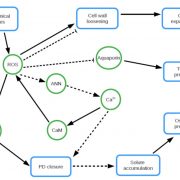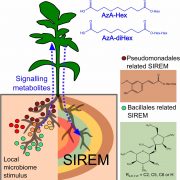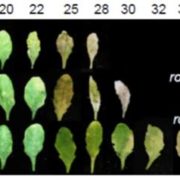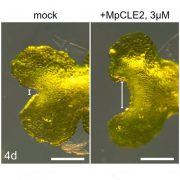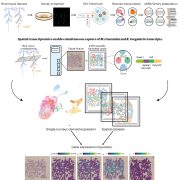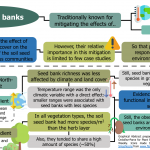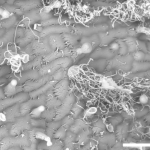A novel family of secreted proteins linked to plant gall development (bioRxiv)
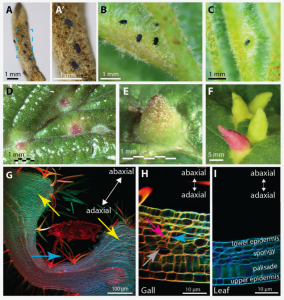 Insect-induced galls are abnormally patterned plant organs that provide insects with protection and a nutrient source, yet mechanisms underlying the development of these unique organs are mostly unknown. To identify insect factors that govern gall pattering, Korgaonkar et al. turned to the natural variation of the colors of galls induced by various insect species. They used the leaves of witch hazel, Hamamelis virginiana, as the host and the populations of aphid, Hormaphis cornu, as the galling insect model. A genome-wide association study on H. cornu isolated from 43 green galls and 47 red galls identified a gene, termed determinant of gall color (dgc), strongly associated with gall color; red galls were associated with weak dgc expression. Consistently, high levels of dgc transcription are associated with the downregulation of plant anthocyanin genes and two anthocyanins. Transcriptome analysis of H. cornu at different life cycles identified novel genes, termed bicycle genes (because of a conserved pair of CYC motifs; bi-CYC-like), which are specifically induced in the salivary glands of aphids only when they are able to induce galls. The authors propose that proteins encoded by bicycle genes, that are evolutionarily related to dgc and are under strong positive selection, may be secreted from gall-forming aphids into the host to affect various aspects of gall development. (Summary by Tatsuya Nobori @nobolly) bioRxiv 10.1101/2020.10.28.359562
Insect-induced galls are abnormally patterned plant organs that provide insects with protection and a nutrient source, yet mechanisms underlying the development of these unique organs are mostly unknown. To identify insect factors that govern gall pattering, Korgaonkar et al. turned to the natural variation of the colors of galls induced by various insect species. They used the leaves of witch hazel, Hamamelis virginiana, as the host and the populations of aphid, Hormaphis cornu, as the galling insect model. A genome-wide association study on H. cornu isolated from 43 green galls and 47 red galls identified a gene, termed determinant of gall color (dgc), strongly associated with gall color; red galls were associated with weak dgc expression. Consistently, high levels of dgc transcription are associated with the downregulation of plant anthocyanin genes and two anthocyanins. Transcriptome analysis of H. cornu at different life cycles identified novel genes, termed bicycle genes (because of a conserved pair of CYC motifs; bi-CYC-like), which are specifically induced in the salivary glands of aphids only when they are able to induce galls. The authors propose that proteins encoded by bicycle genes, that are evolutionarily related to dgc and are under strong positive selection, may be secreted from gall-forming aphids into the host to affect various aspects of gall development. (Summary by Tatsuya Nobori @nobolly) bioRxiv 10.1101/2020.10.28.359562


